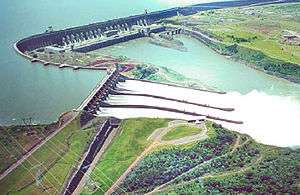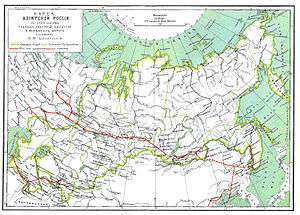Megaproject


A megaproject is an extremely large-scale investment project.[1]
Definition
"Megaprojects are temporary endeavours (i.e. projects) characterized by: large investment commitment, vast complexity (especially in organizational terms), and long-lasting impact on the economy, the environment, and society".[2] The European Cooperation in Science and Technology (COST) categorises megaprojects as having "extreme complexity (both in technical and human terms) and by a long record of poor delivery".[1] Megaprojects attract a lot of public attention because of substantial impacts on communities, environment, and budgets, and many cost more than US$1 billion.[3] Megaprojects can also be defined as "initiatives that are physical, very expensive, and public".[4] Bent Flyvbjerg, a professor at the Saïd Business School of the University of Oxford says that globally, megaprojects make up 8 percent of total GDP.[5]
Care in the project development process is required to reduce any possible optimism bias and strategic misrepresentation, as a curious paradox exists in which more and more megaprojects are being proposed despite their consistently poor performance against initial budget and schedule forecasts.[6]
Examples
Megaprojects include bridges, tunnels, highways, railways, airports, seaports, power plants, dams, wastewater projects, Special Economic Zones, oil and natural gas extraction projects, public buildings, information technology systems, aerospace projects, weapons systems, large-scale sporting events and, more recently, mixed use waterfront redevelopments; however, the most common megaprojects are in the categories of hydroelectric facilities, nuclear power plants, and large public transportation projects.
According to Bent Flyvbjerg, "as a general rule of thumb, “megaprojects” are measured in billions of dollars, “major projects” in hundreds of millions, and “projects” in millions and tens of millions."[5]
Rationale
The logic on which many of the typical megaprojects are built is collective benefits; for example electricity for everybody (who can pay), road access (for those that have cars), etc. They may also serve as the means for opening frontiers.[7] Megaprojects have undergone a wide criticism for their top down planning processes and for their ill effects on certain communities. Large scale projects often advantage one group of people while disadvantaging another, for instance, the Three Gorges Dam in China is the largest hydroelectric project in the world,[8] but required the displacement of 1.2 million farmers.[9][10] In the 1970s, the Highway revolts involved urban activists opposing government plans to demolish buildings in freeway routes that would disadvantage the urban working class to benefit commuters.[11] Anti-nuclear protests against proposed nuclear power plants in the United States and Germany have successfully prevented developments due to environmental and social concerns.
More recently, new types of megaprojects have been identified that no longer follow the old models of being singular and monolithic in their purposes, but have become quite flexible and diverse, such as waterfront redevelopment schemes that seem to offer something to everybody. However, just like the old megaprojects, the new ones also foreclose "upon a wide variety of social practices, reproducing rather than resolving urban inequality and disenfranchisement".[12] Because of their plethora of land uses "these mega-projects inhibit the growth of oppositional and contestational practices".[12] The collective benefits that are often the underlying logic of a mega-project, are here reduced to an individualized form of public benefit.
Bent Flyvbjerg argues that policymakers are attracted to megaprojects for four reasons:
- Technological sublime - the rapture that engineers and technologists get from building large and innovative projects, pushing the boundaries for what technology can do.
- Political sublime - the rapture politicians get from building monuments to themselves and for their causes.
- Economic sublime - the delight business people and trade unions get from making lots of money and jobs from megaprojects.
- Aesthethic sublime - the pleasure designers and people who appreciate good design get from building, using, and looking at something very large that is also iconically beautiful.[5]
Economics
Proponents of infrastructure-based development advocate for funding large scale projects to create long-term economic benefits. Investing in megaprojects in order to stimulate the general economy has been a popular policy measure since the economic crisis of the 1930s. Recent examples are the 2008–09 Chinese economic stimulus program, the 2008 European Union stimulus plan, and the American Recovery and Reinvestment Act of 2009.
Megaprojects often raise capital based on expected returns - though projects often go overbudget and over time, and market conditions like commodity prices can change.[13] Concern at cost overruns is often expressed by critics of megaprojects during the planning phase. Bent Flyvbjerg has noted the existence of incentives to overstate income, underestimate costs, and exaggerate future social and economic benefits due to lack of accountability and risk-sharing mechanisms.[14]
One of the most challenging aspects of megaprojects is obtaining sufficient funding. Alan Altshuler and David Luberoff have found that creative and politically adept political leadership is required to secure resources as well as generate public support, mollify critics, and manage conflict through many years of planning, authorization and implementation.[15] Other challenges faced by those planning megaprojects include laws and regulations that empower community groups, contested information and methodologies, high levels of uncertainty, avoiding impacts on neighborhoods and the environment, and attempting to solve a wicked problem.[16]
A Megaproject's economic failures (and successes) have common characteristics. According to John Cunningham, assessing their success, or failure, can be accomplished by benchmarking their performance against these common characteristics in order to mitigate failure and turn a troubled megaproject around.[17]
See also
- List of world's most expensive transport infrastructure
- Macro-engineering
- Megastructure
- Reference class forecasting
- Optimism bias
- Megaprojects and Risk
- When Technology Fails
- World's Toughest Fixes TV series
References
- 1 2 "MEGAPROJECT: The Effective Design and Delivery of Megaprojects in the EU". European Cooperation in Science and Technology.
- ↑ Brookes, Naomi J.; Locatelli, Giorgio (2015-10-01). "Power plants as megaprojects: Using empirics to shape policy, planning, and construction management". Utilities Policy. 36: 57–66. doi:10.1016/j.jup.2015.09.005.
- ↑ "Project Delivery Defined". Federal Highway Administration.
Prior to the enactment of SAFETEA-LU in August 2005, projects with over $1 billion in construction costs were designated as "Mega Projects". SAFETEA-LU has lowered the monetary threshold from an estimated total cost of $1 billion to $500 million or greater, and the term "Mega Project" has since been eliminated and replaced with the term "Major Project."
- ↑ Alan Altshuler and David Luberoff, Mega-Projects: The Changing Politics of Urban Public Investment (Washington, DC: Brookings Institution, 2003). ISBN 0-8157-0129-2
- 1 2 3 "What You Should Know About Megaprojects and Why: An Overview". Project Management Journal. 7 Apr 2014.
- ↑ Bent Flyvbjerg, Nils Bruzelius and Werner Rothengatter, Megaprojects and Risk: An Anatomy of Ambition (Cambridge UK, Cambridge University Press, 2003). ISBN 0-521-00946-4
- ↑ "The Political Economy of Very Large Space Projects". Journal of Evolution and Technology. November 1999. Retrieved 16 November 2015.
- ↑ "Three Gorges breaks world record for hydropower generation". Xinhua. 1 January 2014. Retrieved 2 January 2015.
- ↑ "Millions forced out by China dam". BBC News. 2007-10-12. Retrieved 2008-01-20.
- ↑ Julie Chao (2001-05-15). "Relocation for Giant Dam Inflames Chinese Peasants". National Geographic. Retrieved 2008-01-20.
- ↑ Gillham, Oliver; MacLean, Alex (2002), The Limitless City: A Primer on the Urban Sprawl Debate, Island Press, ISBN 1-55963-833-8
- 1 2 Lehrer, U.; Laidley, J. (2008). "Old Mega-projects Newly Packaged? Waterfront Redevelopment in Toronto". International Journal for Urban and Regional Research. 32 (4): 786–803.
- ↑ "Crude Oil's Fall Pressures Energy Megaprojects". Wall Street Journal. 8 Dec 2014.
- ↑ Flyvberg, B., Bruzelius, N., Rothengatter, W. Megaprojects and Risk: An Anatomy of Ambition. Cambridge: Cambridge University Press
- ↑ Altshuler, Alan and David Luberoff. Mega-Projects: The Changing Politics of Urban Public Investment. Washington, D.C.: Brookings Institution, 2003.
- ↑ Plotch, Philip Mark. What’s Taking So Long? Identifying the Underlying Causes of Delays in Planning Transportation Megaprojects in the United States. Journal of Planning Literature. Available online January 8, 2015.
- ↑ Cunningham, John (2015), "Mega Project Benchmarking - In the 21st Century", Retrieved: 27 January 2016: https://www.linkedin.com/pulse/mega-project-bench-marking-21st-century-john-m-cunningham-1?trk=pulse_spock-articles
External links
- Mega-project.eu, a website run by European Cooperation in Science and Technology
- Borovoye-Biocity — megaproject of Bionic City for Kazakhstan — S. Rastorguev, M. Kudryashov, 2008
- Catalogue of Catastrophe - list of troubled large projects
- Video by Michael Hobbes on YouTube, building on the book Megaprojects and Risk